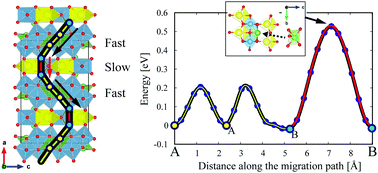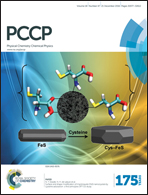Li intercalation mechanisms in CaTi5O11, a bronze-B derived compound
Abstract
A first-principles study was performed to elucidate the electrochemical properties of CaTi5O11, a recently discovered compound that is a crystallographic variant of TiO2(B) and that shows promise as an anode material for Li-ion batteries. The crystal structure of CaTi5O11 was further refined and two symmetrically distinct interstitial sites that can accommodate Li at positive voltage were identified. A statistical mechanics study relying on density functional theory (DFT) calculations predicted that interstitial Li in CaTi5O11 forms a solid solution with Li insertion resulting in a sloping voltage profile. Li diffusion within CaTi5O11 was found to be highly anisotropic with low barrier diffusion pathways forming one-dimensional channels parallel to the c axis.


 Please wait while we load your content...
Please wait while we load your content...